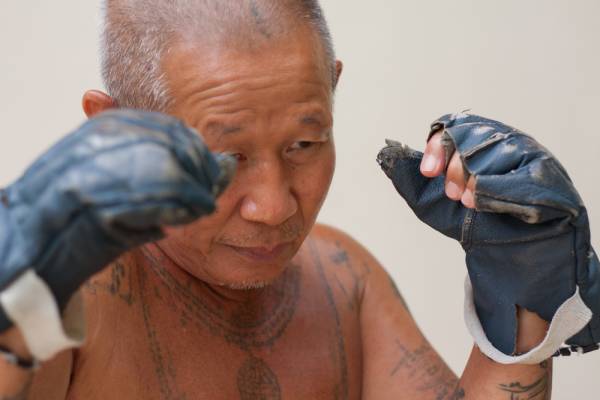Sparring is the heart and soul of practicing muay Thai. It is the one thing that absolutely needs to be done in order for a fighter to improve. You can skip rope, drill for hours, or work the pads, but if you don’t spar, then you won’t get better, plain and simple. Sparring should be looked forward to by muay Thai practitioners and not shunned. It’s the chance to really use what you have learned and the only solid way to mark your progress.
The Purpose of Sparring
Sometimes the idea of what is to be achieved during a sparring session is lost on students. More often than not, I see egos get in the way of actually trying to achieve a goal and get something out of the session. The purpose of sparring is to make both you and your partner better. You should be trying to work and flow with one another, while at the same time developing better reaction time and enhancing your skills. Remember, sparring is not fighting. There is a large difference between the two. During sparring you’re not trying to beat your partner into submission. The gym should not be your proving ground. That’s what the ring is for.
This can be a difficult thing to keep in mind in the heat of the moment. When you feel someone land a good shot on you, it’s natural to pick up the pace, hit harder, and get those points back. That being said, there is a time and place for hard sparring, but high-intensity sparring should not be the norm. That doesn’t mean you can’t work hard. It just means you have to use self-control. Sparring hard and beating one another to a pulp all the time is only going to get you injured and keep you out of the gym.
Technical Sparring
One thing I love about the art of Brazilian jiu jitsu is that in almost every session “technical sparring” takes place. No one gets hurt, but everyone learns. BJJ practitioners aren’t trying to smash and grind each other into the mat, and that’s what sparring is all about – learning. If you have ever had the privilege to watch people who were born and trained in Thailand spar, it’s almost as if they are playing. It’s exactly how it should be. But while they may have smiles on their faces, they are being serious and working on their techniques.

If you are a fighter then technical sparring should be extra important to you. Every Friday my coach invites fighters and coaches from other gyms to come and work with us. It’s an awesome time and we all walk away exhausted with some minor bruises and a ton of stuff to work on. Sparring with people you are unfamiliar with is the best thing you can do for your fight game. If you only spar with your teammates, then I guarantee your progress will quickly plateau. Getting better is all about stepping out of your comfort zone and being forced to do what you do.
Hard Sparring
Hard sparring is important for the fighter and should not be overlooked in training. Nothing will ever push you harder and simulate the stress of a real fight more than a good hard sparring session. Just make sure that hard sparring happens only occasionally. It’s the exact same thing as testing your one-rep-max. Don’t do it often and you will be fine. And in hard sparring remember that emotions can flare up quickly, which is good, but it’s always a good idea to have your coach there to ref the match.
Keep these concepts and types of sparring in mind when you’re training. And when you do get in the ring to spar, remember to always work with your partners, listen to your coach, and keep progressing towards your goals.
Photo 1 by U.S. Navy photo by Mass Communication Specialist 2nd Class Kristopher S. Wilson [Public domain], via Wikimedia Commons.
Photo 2 courtesy ofShutterstock.
Photo 3 by Lance Cpl. Alfred V. Lopez [Public domain], via Wikimedia Common.






